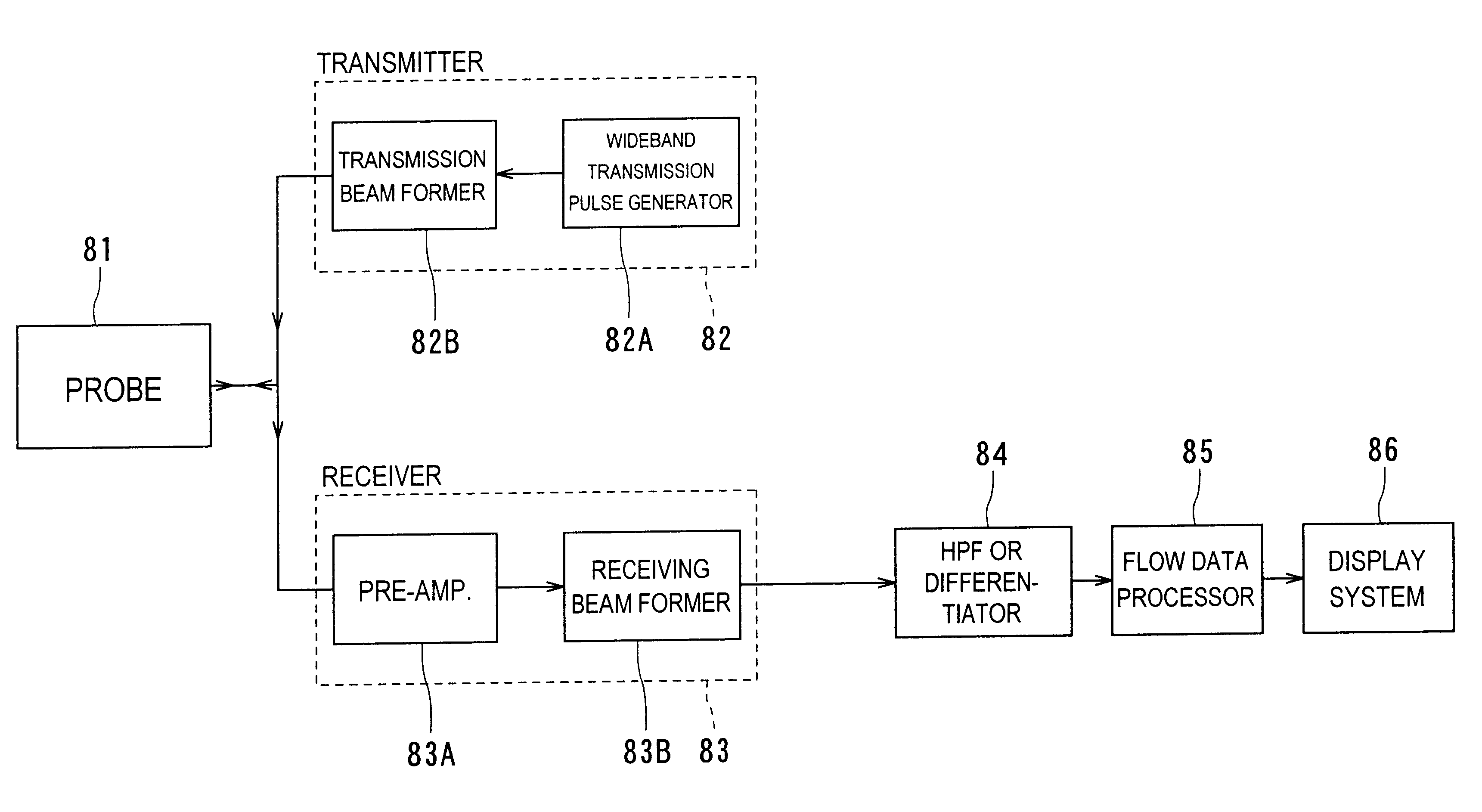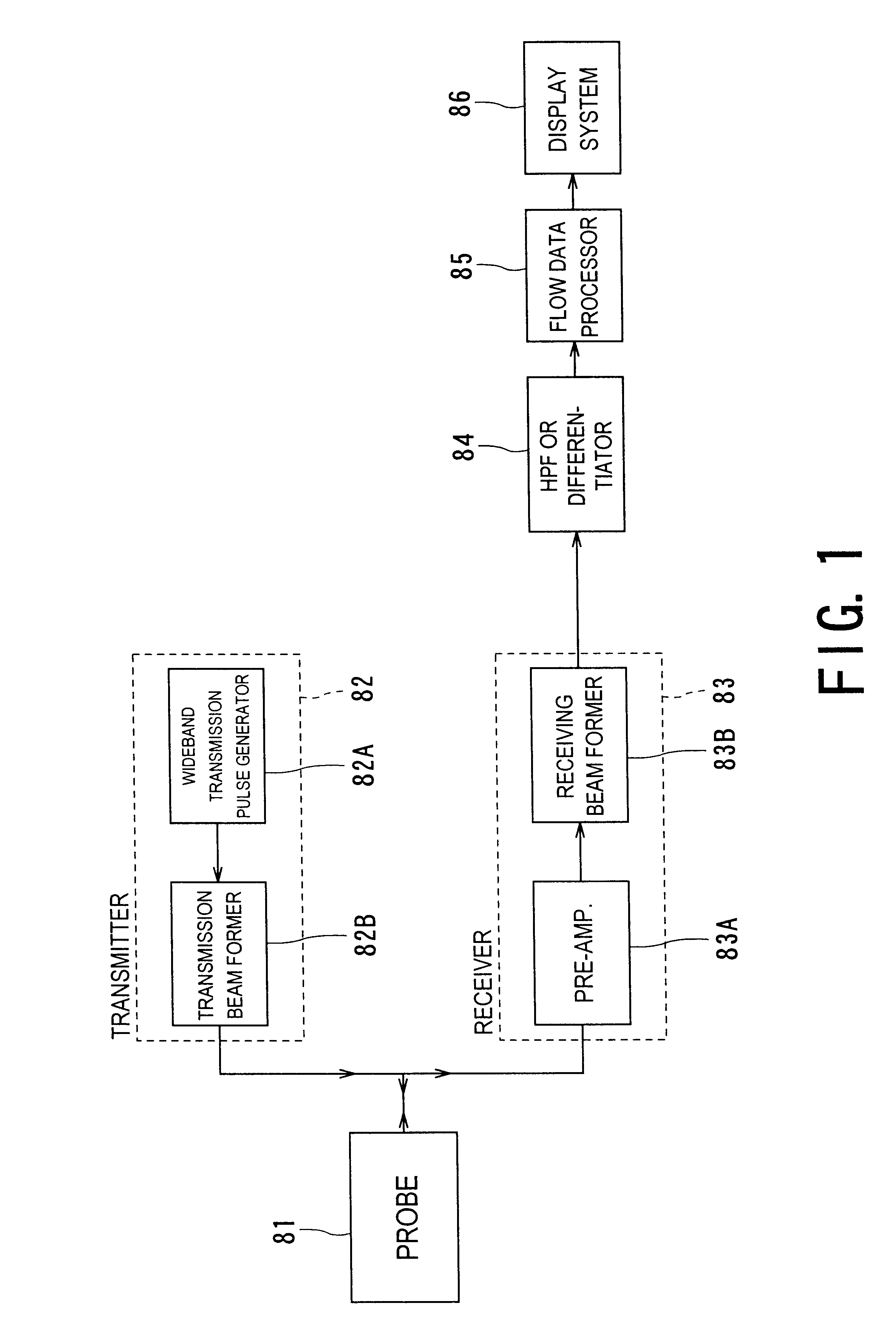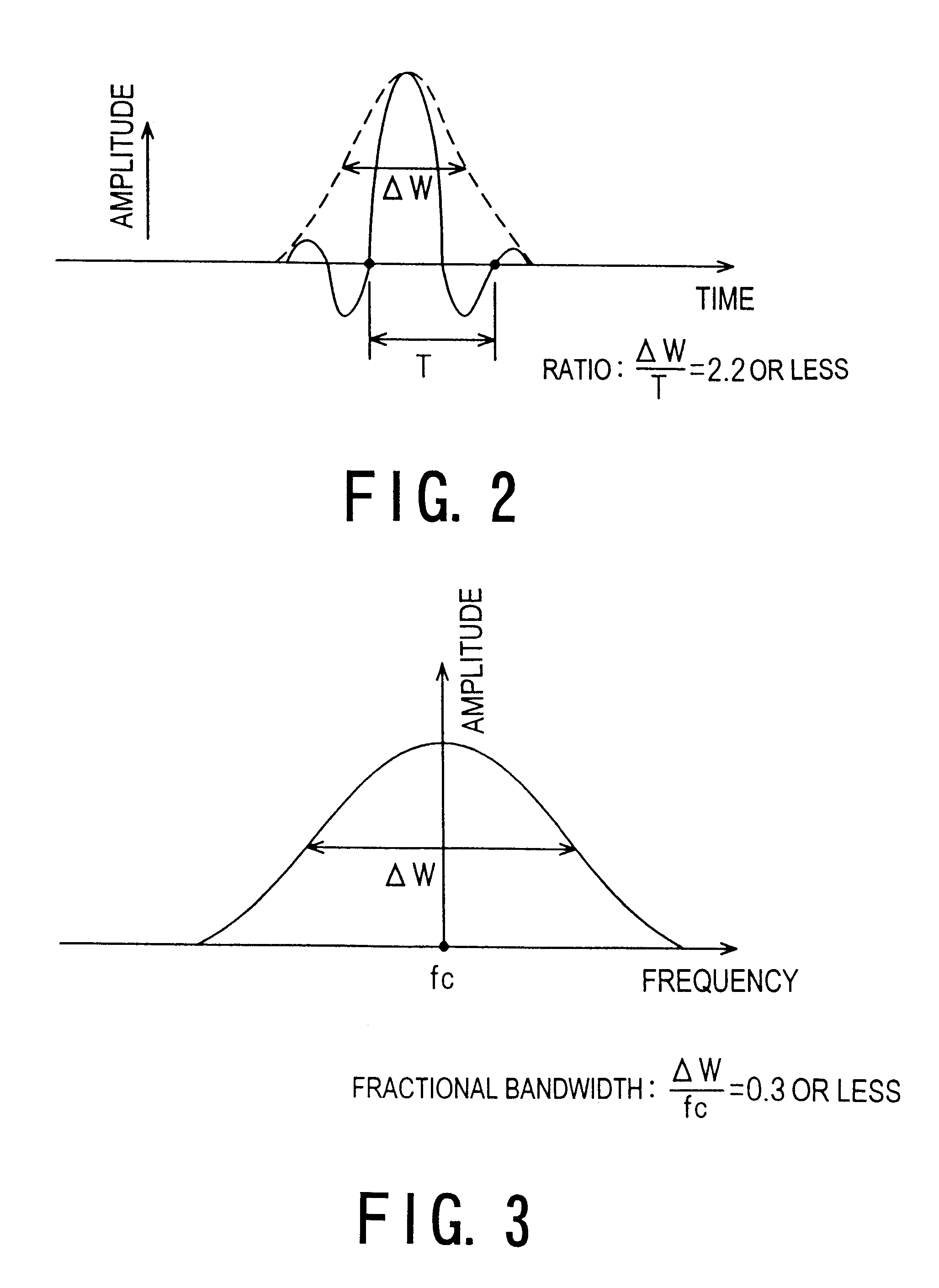High resolution flow imaging for ultrasound diagnosis
a flow imaging and ultrasound technology, applied in tomography, instruments, applications, etc., can solve the problems of reducing realtime performance, deteriorating range resolution, and difficulty in raising pressure any mor
- Summary
- Abstract
- Description
- Claims
- Application Information
AI Technical Summary
Problems solved by technology
Method used
Image
Examples
first embodiment
(1) First Embodiment
Referring to FIGS. 1 to 4 and 39, a diagnostic ultrasound apparatus according to a first embodiment will now be described.
This diagnostic ultrasound apparatus is used to obtain a blood flow image by performing an contrast echo technique that requires a contrast agent to be injected to, for example, the vein of a patient, but it is not necessarily required that the contrast agent be injected. That is, the apparatus is also used in performing a non-contrast echo technique.
FIG. 1 is a block diagram that shows an outlined configuration of this diagnostic ultrasound apparatus. In this apparatus, a transmitter 82 and a receiver 83 are both connected with a probe 81. A highpass filter (HPF) or differentiator 84, flow data processor 85 and display system 86 are arranged in this order at the output side of the receiver 83. Either one of the HPF or the differentiator 84 is used to remove a signal component originated from surrounding tissue to extract a reflected signal fr...
second embodiment
(2) Second Embodiment
Referring to FIG. 5, a diagnostic ultrasound apparatus according to a second embodiment will now be described. This apparatus is used on the contrast echo or non-contrast echo method and uses a band-variable filter.
As shown in FIG. 5, between the receiving beam former 83B and the HPF or differentiator 84, a band-variables filer 87 functioning as filter means is inserted. The band-variable filter 87 has a passing band controlled by a frequency band setting device 88.
The band-variable filter 87 has a desired passing characteristic set to a passing echo signal at each depth in a raster along which a received beam is formed. This configuration is able to remove noise existing in an outside band of a signal so as to increase an S / N. In addition, echo signals are obtained, from which influences of both signal attenuation and band changes in the depth direction are corrected. Further it is possible that the fundamental wave of high sensitivity, a harmonic wave of less ...
third embodiment
(3) Third Embodiment
Referring to FIG. 6, a diagnostic ultrasound apparatus according to a third embodiment will now be described. This apparatus is concerned with the changeover of transmission / reception characteristics in cases where the contrast and non-contrast echo methods are selectively used.
As shown in FIG. 6, on top of the configurations in FIG. 5, there are additionally provided an echo-method changeover switch 91, transmission-number setting device 92, and direction-number setting device 93.
The echo-method changeover switch 91 is provided to, for example, manually command the changeover between the contrast and non-contrast echo methods. The switch signal is given both the direction-number setting device 93 and the transmission-number setting device 92.
The direction-number setting device 93 is placed to set the number of directions for parallel simultaneous reception and its setting signal is sent to both the transmitter 82 and the receiver 83. The transmission-number sett...
PUM
 Login to View More
Login to View More Abstract
Description
Claims
Application Information
 Login to View More
Login to View More - R&D
- Intellectual Property
- Life Sciences
- Materials
- Tech Scout
- Unparalleled Data Quality
- Higher Quality Content
- 60% Fewer Hallucinations
Browse by: Latest US Patents, China's latest patents, Technical Efficacy Thesaurus, Application Domain, Technology Topic, Popular Technical Reports.
© 2025 PatSnap. All rights reserved.Legal|Privacy policy|Modern Slavery Act Transparency Statement|Sitemap|About US| Contact US: help@patsnap.com



